Are you wondering where to plant in your garden to achieve lush, thriving growth? Let me guide you through some essential gardening tips and help you find the perfect spot for your plants.
Creating planting pockets between crevices in the garden is a great technique to mimic the natural attributes of your site. Analyze natural rock crevices where plants naturally thrive and plant in or near these crevices. Additionally, consider creating raised beds using flat stones for optimal plant growth and to increase planting areas.
When selecting plants for small spaces, give consideration to the space available for their growth, both above and below ground. Recommended small trees and shrubs for small spaces include loquat, weeping yaupon holly, Japanese maple, and white fringe tree. Finally, don’t be afraid to explore new plant varieties to enhance diversity and beauty of your garden.
Key Takeaways:
- Creating planting pockets between crevices can help mimic natural attributes for optimal plant growth.
- Raised beds using flat stones help increase planting areas and add depth to the soil.
- Consider space availability both above and below ground when selecting plants for small spaces.
- Recommended small trees and shrubs for small spaces include loquat, weeping yaupon holly, Japanese maple, and white fringe tree.
- Exploring new plant varieties can enhance the diversity and beauty of your garden.
Creating Planting Pockets for Conducive Conditions
One effective way to ensure your plants thrive is by creating planting pockets in areas with optimal gardening spots. This method involves planting in crevices or areas where the soil depth and composition are suitable for growth. By strategically placing plants in these pockets, gardeners can create a thriving garden even in challenging environments.
Gardeners can observe the natural patterns of the landscape, such as rock crevices that collect rainwater and nutrients, to identify optimal planting areas. Raised beds can also be constructed to increase soil depth and provide additional planting areas. When building a raised bed, it is important to ensure proper drainage and to use nutrient-rich soil to promote healthy plant growth.
Selecting suitable plants for your garden space is also crucial. By considering the space requirements of plants and avoiding overcrowding, gardeners can create a lush and beautiful garden that is easy to maintain. Small trees and shrubs can be used to create a natural fence or screen between properties, but homeowners should consider the space available for growth and root systems when selecting and planting them.
In addition to choosing the right planting location and selecting suitable plants, creating nutrient-rich soil through composting is crucial for nourishing plants and promoting healthy root growth. Composting not only reduces waste but also helps to build soil structure and fertility. By nourishing the soil, gardeners can ensure their plants have the nutrients they need to thrive.
Overall, creating planting pockets for conducive conditions is a gardening technique that can lead to a thriving garden even in challenging environments. By observing the natural patterns of the landscape, selecting suitable plants, and nourishing the soil, gardeners can create a beautiful and sustainable garden that enhances their outdoor space.
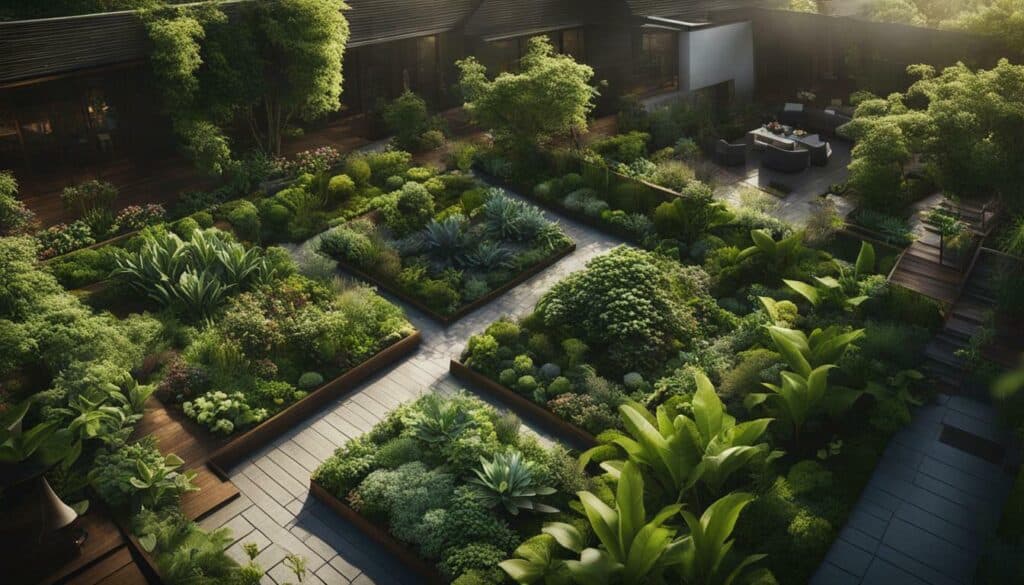
Suitable Trees and Shrubs for Small Spaces
When it comes to planting trees and shrubs in smaller garden spaces, it’s crucial to choose varieties that are suitable and ensure they have enough room to flourish without causing any issues. Maximizing the available space and selecting plants that will thrive in limited areas is key.
Planting trees and shrubs close together not only maximizes space but also provides healthier growing conditions by locking in moisture and inhibiting weed growth. However, it’s important to avoid overcrowding plants as it can lead to stunted growth and overall unhealthy conditions.
Pruning and maintaining shrubs and hedges is essential for a gorgeous garden. A regular pruning schedule not only keeps plants at optimal health, but can also promote the growth of new foliage and flowers.
When selecting small trees and shrubs for small spaces, homeowners should consider the amount of space available for growth. Some recommended varieties include:
| Plant Name | Description |
|---|---|
| Loquat | A fruit-bearing tree that can grow up to 20 feet tall, but can be pruned to keep it small. It produces small, pear-shaped fruits with a tangy-sweet flavor. |
| Weeping Yaupon Holly | A small tree or large shrub that grows 15 to 20 feet tall. It has a unique weeping habit and produces bright red berries in fall and winter. |
| Japanese Maple | A beautiful, slow-growing tree with delicate, lacy leaves. It can grow up to 20 feet tall, but many varieties stay much smaller. |
| White Fringe Tree | A small, ornamental tree that grows up to 20 feet tall. It produces fragrant, white flowers in late spring and early summer. |
Feeding the soil with compost is more important than feeding the plants directly. This promotes healthy root systems and overall plant growth. Exploring new plant options and adding variety to the garden enhances diversity and adds value to the overall landscape.
Remember, with a little bit of planning and care, even small garden spaces can be transformed into lush, beautiful outdoor retreats.
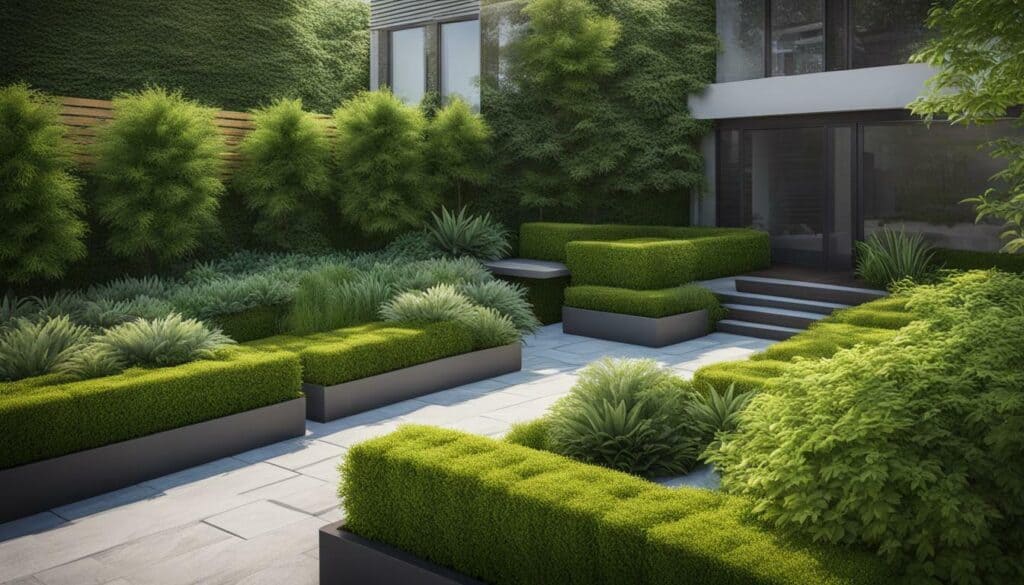
Pruning and Maintenance for Healthy Shrubs and Hedges
To maintain a healthy and visually appealing garden, it’s important to prioritize proper pruning and maintenance of shrubs and hedges. Pruning helps to maintain the shape and size of plants, promotes healthy growth, and reduces the risk of disease. Regular pruning also helps to keep plants looking tidy and maintains the overall aesthetics of the garden.
When pruning, it’s important to use the right tools and techniques to avoid damaging the plant. Hand pruners are great for small stems, while loppers are better for larger branches. A good rule of thumb is to prune back no more than one-third of the plant’s growth at any one time. This helps to prevent shock and excessive stress.
Another crucial aspect of maintaining healthy shrubs and hedges is proper maintenance. This includes watering regularly, fertilizing as needed, and removing any dead or diseased branches. In addition, it’s important to mulch around the base of the plant to retain moisture and prevent weed growth.
By consistently following these pruning and maintenance practices, homeowners can keep their shrubs and hedges healthy and visually appealing year-round. Not only does this enhance the overall aesthetics and value of the garden, but it also promotes healthier growth and minimizes the risk of disease.
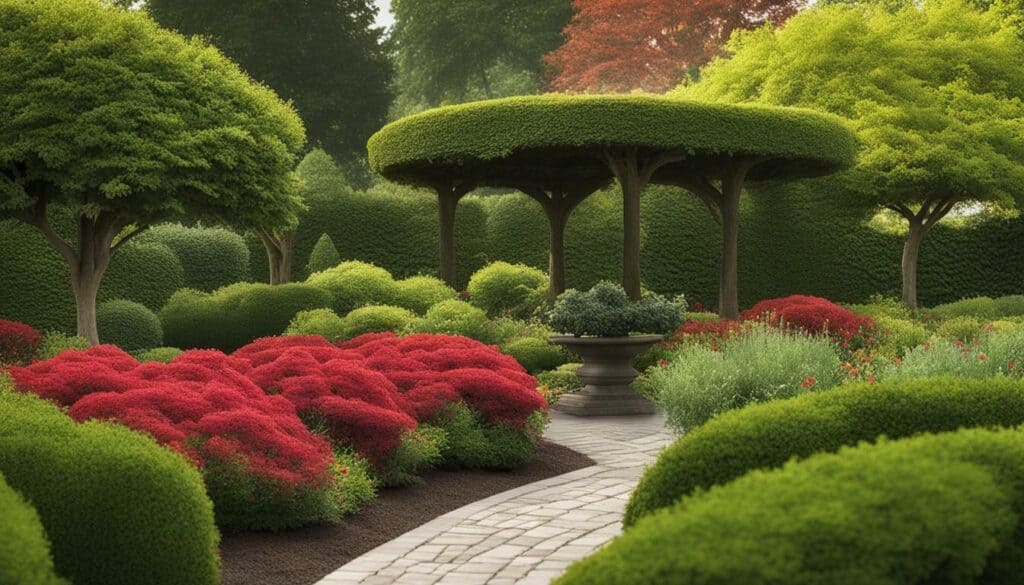
Nourishing the Soil for Healthy Root Systems
Instead of just focusing on feeding your plants, prioritize nourishing the soil with compost to promote healthy and strong root systems. One way to achieve this is by creating planting pockets between crevices in the soil. Gardeners discovered that naturally occurring plants thrived along crevices where rainwater and nutrients were deposited. By planting in these crevices, they saw their plants grow vigorously.
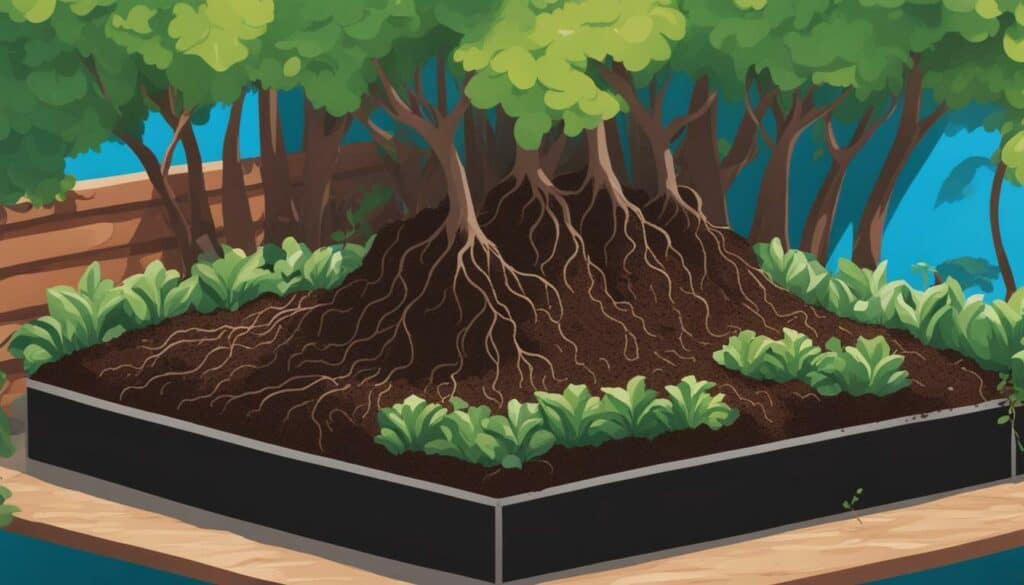
Another way to promote healthy root systems is by building raised beds and filling them with homemade soil made from topsoil, sand, aged horse manure, and other materials that contribute to soil health. Composting with organic materials like grass cuttings, plant prunings, kitchen scraps, and shredded leaves also nourishes the soil.
It is also important to give plants enough space to grow. Choosing small trees and shrubs that fit the available space and considering both above-ground and below-ground space is crucial. The University of Georgia Cooperative Extension recommends trees and plants that are under 20 feet in height, such as loquat, weeping yaupon holly, Japanese maple, and white fringe tree, for small garden spaces. Overall, nourishing the soil and giving plants the space they need are key to fostering healthy root systems.
Wide Beds for Depth, Structure, and Weed Reduction
Creating wide beds in your garden not only adds depth and structure but also helps to reduce weed growth. By utilizing the natural slopes of bedrock outcroppings, gardeners can create planting pockets that enhance the health and growth of their plants. These pockets provide optimal growth conditions for plants, and they also add interest and variety to the overall landscape.
Constructing raised beds can also add more planting areas while minimizing maintenance work. Raised beds are ideal for growing plants that require well-drained soils and good drainage, such as vegetables and fruit trees. They can also be used to create a natural fence in a landscape.
It is important to consider the space and growth requirements of trees and shrubs when creating a natural fence in a landscape. Selecting trees and shrubs that fit the space and provide enough room for long-term growth is essential for creating an attractive and healthy garden.
| Benefits of Wide Beds | How Wide Beds Help with Weed Reduction |
|---|---|
| Wide beds provide more planting area for a variety of plants, adding depth and structure to the overall landscape. | By creating a wider bed, gardeners can reduce the number of weeds that can grow between the plants, as well as make it easier to manage them if they do grow. |
| Wide beds can improve soil quality by allowing for more organic matter to be added and providing more space for roots to grow. | In a wide bed, the plants have more space to spread out, which reduces competition for nutrients and water. This can also lead to healthier plants. |
| Wide beds can be more visually appealing, providing a natural look and feel to a garden. | By planting more densely in a wide bed, the plants will shade the soil, preventing weeds from germinating and growing. |
Proper soil nourishment and the use of compost can contribute to plant health and long-term growth. By adding compost to the soil, gardeners can improve soil structure, increase water retention, and add nutrients. This can lead to healthier plants with stronger root systems that are better equipped to withstand adverse weather conditions.
Incorporating a variety of plants and enhancing diversity in the garden can add value to the overall landscape. By selecting plants with different colors and textures, gardeners can create a visually stunning and attractive garden that provides a range of benefits, including improved soil health and more opportunities for pollinators and other wildlife.
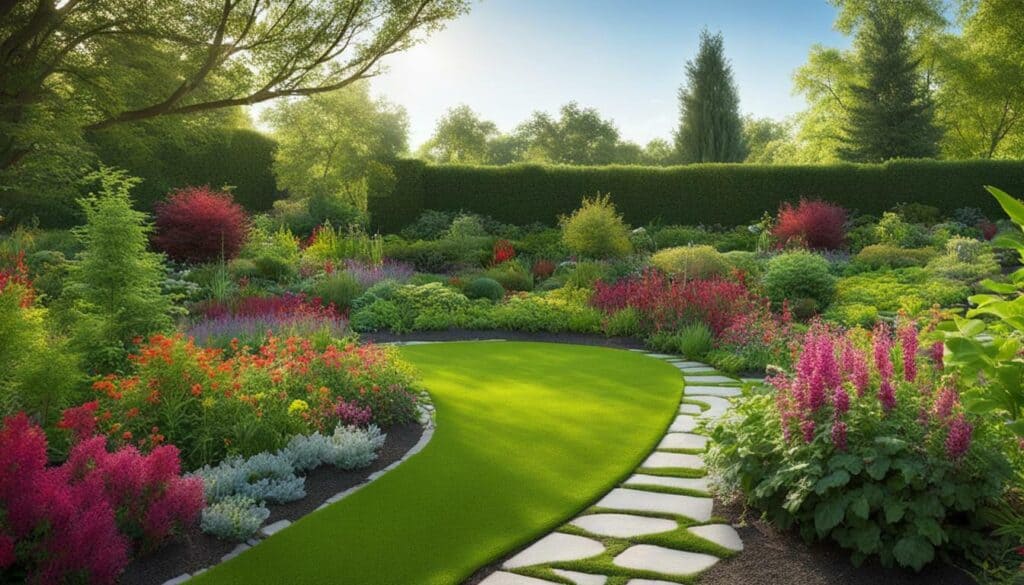
Adding Diversity with Colors and Textures
To create a visually stunning garden, consider adding diversity with plants that offer a range of colors and textures. There are many ways to add diversity and texture to your garden. One way is through the use of planting pockets between crevices. By observing the natural crevices in your garden, you can identify the areas where plants thrive, as these crevices provide moisture and nutrients. Utilizing these crevices and planting in them can result in healthy and flourishing plants.
Another way to add diversity is by creating raised beds and using wide planting beds. Raised beds can create more space for plants to grow and provide a unique opportunity to layer plants of different heights and textures. Wide planting beds can also provide more space for plants to grow and add diversity to the garden.
When selecting plants, it is important to consider their mature size and growth habits to ensure they fit well within the available space. Some recommended small trees and plants for small spaces include loquat, weeping yaupon holly, Japanese maple, and white fringe tree. These plants are perfect for smaller gardens and provide a range of colors and textures.
Adding a variety of plants with different colors and textures can also help create a diverse and visually appealing garden. Consider incorporating plants with variegated leaves, such as hostas or variegated heucheras, which offer a range of colors that can add interest to your garden. Adding colorful flower beds or hanging baskets with brightly colored flowers can also add a pop of color to your garden.
With the right combination of plants, colors, and textures, you can create a diverse and visually stunning garden that will be the envy of all your neighbors. So, take some time to consider the options available to you and get creative with your planting choices!

Bringing It All Together: Creating a Stunning and Thriving Garden Space
By following these tips and incorporating the advice provided, you can create a truly stunning and thriving garden space. The key is to take a holistic approach and consider all aspects of your garden, from the natural patterns of the site to the types of plants you choose to plant.
Creating planting pockets between crevices or using raised beds are both practical and effective methods to create optimal growing conditions for your plants. Furthermore, preparing the soil properly with organic materials can help create a fertile environment that encourages healthy root systems.
Remember to consider the space available and avoid overcrowding, as this can lead to unhealthy and stunted growth. Pruning shrubs and hedges regularly not only maintains their health but also adds character and structure to your garden.
Don’t forget to focus on nourishing the soil with compost, which provides essential nutrients for your plants to thrive. Wide beds also offer numerous benefits, including adding depth and structure, and minimizing weed growth in your garden.
Finally, add diversity by planting greenery with different colors and textures. This not only creates a visually appealing garden but also helps to attract beneficial insects and pollinators.
By incorporating these tips and strategies, you can achieve a garden that is not only visually stunning but also thriving and healthy for years to come.
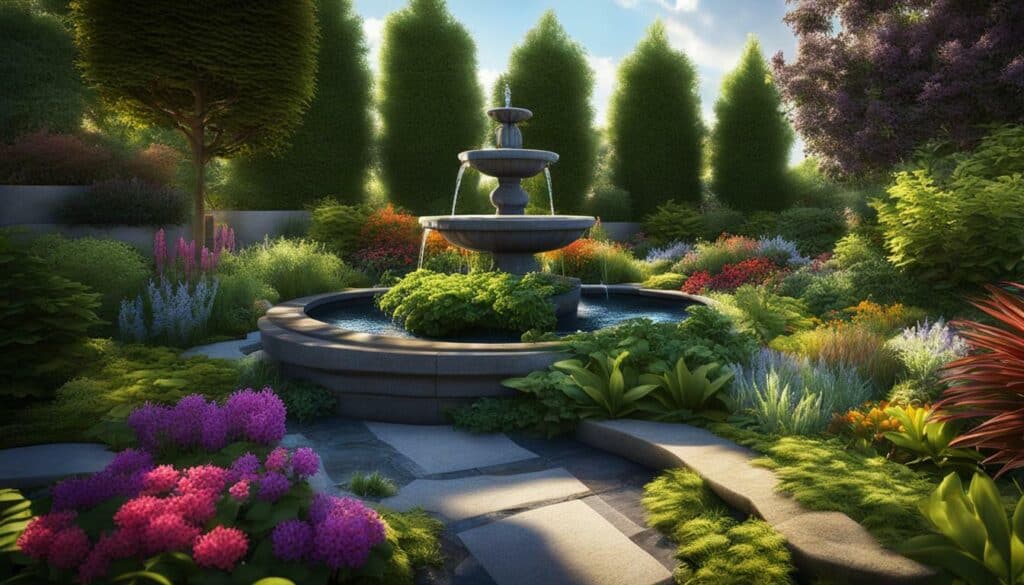
In Conclusion: Creating a Lush and Practical Garden
In conclusion, choosing the right location for planting in your garden is crucial for achieving lush, thriving growth. Creating planting pockets between crevices can provide optimal soil depth and drainage for plants. If there aren’t any natural crevices available, consider using raised beds to create more planting areas and increase soil depth. Don’t forget to focus on nourishing the soil with compost to promote plant health.
When selecting trees and plants for small spaces, it’s important to consider their mature size and spacing to avoid overcrowding and maintenance issues. Pruning and maintenance practices are vital for a healthy and visually appealing garden. Incorporating a variety of plants and colors can enhance the diversity and appeal of the garden.
Overall, creating a beautiful and functional garden is a gradual process that requires observation and adaptation to the unique attributes of the site. By following these tips and advice, you can bring together a stunning and thriving garden space that you can enjoy for years to come.
FAQ
Q: Where should I plant in my garden for lush growth?
A: It is important to choose the right location for planting in your garden to achieve lush growth. Look for areas with natural crevices in bedrock ledges or create raised beds using flat stones to create planting pockets with conducive conditions for growth.
Q: What are the benefits of creating planting pockets?
A: Creating planting pockets provides deep planting areas that allow for better soil quality and drainage. This can result in healthier plants and lush growth in your garden.
Q: How can I choose suitable trees and shrubs for small spaces?
A: When selecting trees and shrubs for small spaces, it is important to choose varieties that are suitable for the size of your garden. Make sure they have enough room to grow without causing damage to structures or blocking views.
Q: Why is pruning and maintenance important for shrubs and hedges?
A: Proper pruning and maintenance practices are important for shrubs and hedges to ensure a healthy and visually appealing garden. Regular pruning helps maintain their shape and promotes new growth.
Q: Should I focus on feeding the plants or nourishing the soil?
A: Instead of solely focusing on feeding the plants, prioritize nourishing the soil with compost. This helps promote healthy root systems and overall plant health.
Q: How can wide beds help reduce weed growth?
A: Planting flowers and greenery in wide beds adds depth and structure to the garden. This reduces weed growth by minimizing available space for weeds to take root.
Q: Why is adding diversity important in a garden?
A: Adding plants with different colors and textures adds visual interest and diversity to your garden. It creates a more dynamic and appealing space.
What Are the Best Plants to Pair with a Garden Fountain Basin for Lush Growth?
When it comes to creating a lush garden, stylish garden fountain basins for home can play a significant role. To enhance the greenery around the fountain, consider planting vibrant flowers like petunias or roses. For a touch of elegance, ornamental grasses such as fountain grass or maiden grass can create a beautiful contrast. Additionally, creeping vines like ivy or jasmine can add a whimsical and romantic feel. By carefully selecting the right plants, you can achieve a stunning garden ambiance around your stylish garden fountain basin.
Source Links
- https://www.finegardening.com/article/a-lush-garden-on-the-rocks
- https://www.homestolove.com.au/how-to-make-your-garden-lush-3147
- https://newswire.caes.uga.edu/story/9023/small-space-planting.html
- https://house-nerd.com/2021/05/30/lush-garden-plants-for-free/
- https://www.finegardening.com/article/planted-pockets-give-life-to-stone-walls
- https://extension.uga.edu/publications/detail.html?number=B932&title=soil-preparation-and-planting-procedures-for-ornamental-plants-in-the-landscape
- https://growinginthegarden.com/gardening-in-grow-bags-5-tips-for-success/
- https://www.finegardening.com/project-guides/gardening-basics/surprising-shrubs-for-small-spaces
- https://www.provenwinners.com/learn/top-ten-lists/top-10-shrubs-containers-and-small-spaces
- https://www.thespruce.com/top-trees-for-small-spaces-4169613
- https://extension.umd.edu/resource/pruning-shrubs-and-hedges-home-garden
- https://extension.umn.edu/planting-and-growing-guides/pruning-trees-and-shrubs
- https://www.bhg.com/gardening/trees-shrubs-vines/care/what-to-prune-when/
- https://www.almanac.com/soil-preparation-how-do-you-prepare-garden-soil-planting
- https://extension.psu.edu/practical-tips-for-healthy-soil-in-a-home-garden
- https://learn.eartheasy.com/articles/how-to-build-and-nourish-healthy-garden-soil/
- https://www.gardeners.com/how-to/raised-bed-basics/8565.html
- https://savvygardening.com/4×8-raised-bed-vegetable-garden-layout/
- https://www.gardenary.com/blog/the-complete-guide-to-raised-beds
- http://debsgarden.squarespace.com/journal/2011/5/13/gardening-with-texture-and-color.html
- https://www.thespruce.com/garden-design-with-plant-texture-4056275
- https://www.tidyawaytoday.co.uk/plant-diversity-how-to-add-colour-and-texture-to-your-garden/?utm_source=rss&utm_medium=rss&utm_campaign=plant-diversity-how-to-add-colour-and-texture-to-your-garden
- https://growingupherbal.com/5-steps-beautiful-home-garden/
- https://www.thespruce.com/how-to-start-a-garden-from-scratch-2132778
- https://www.prettypurpledoor.com/arrange-plants-in-garden/
- https://growingourown.wordpress.com/6-conclusion/
- https://msutreehugger.weebly.com/chapter-v-conclusions-and-recommendations.html
- https://www.daleharvey.com/in-the-garden/articles-of-interest/PACIFIC STEEL SUTTON PARK/Sutton Park Primary School Gardening Project/Page 5 – Conclusion.html

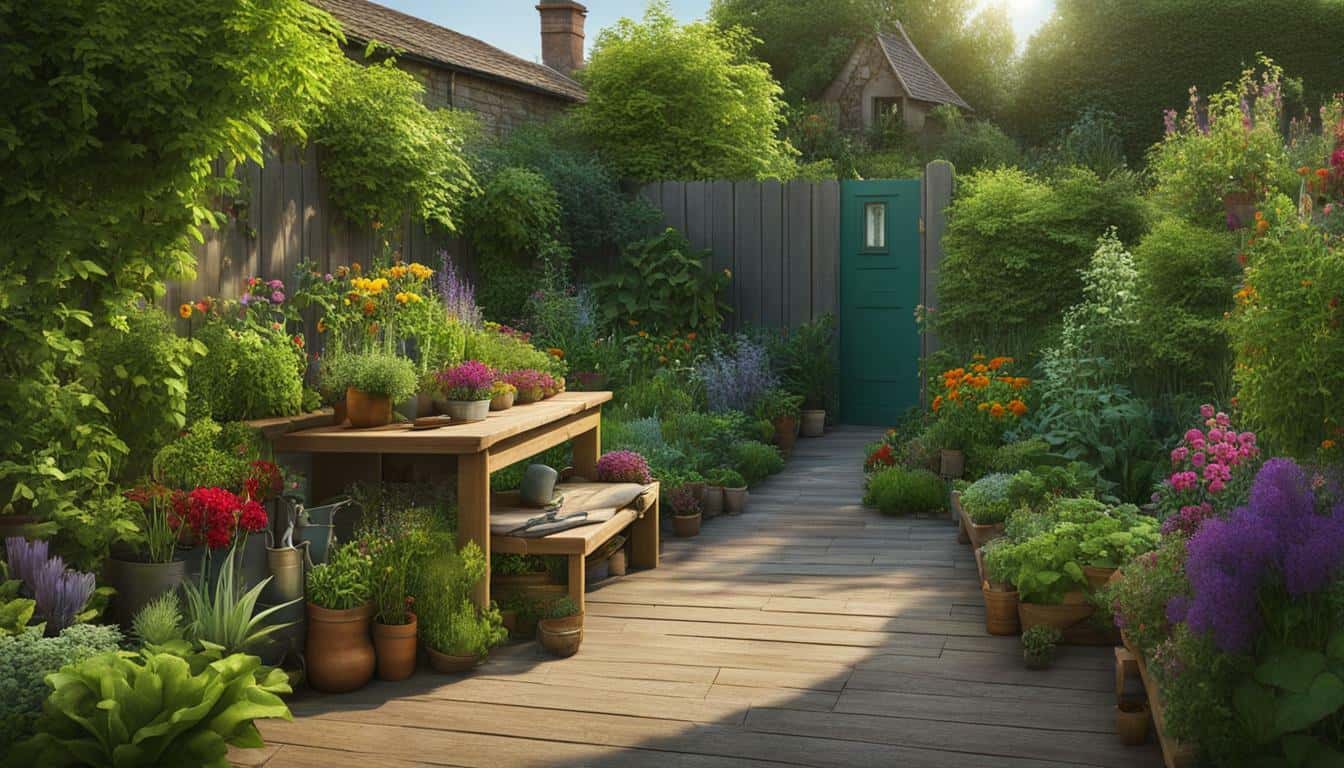



Leave a Reply